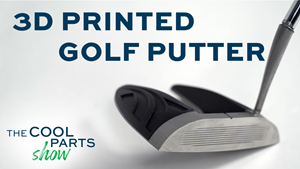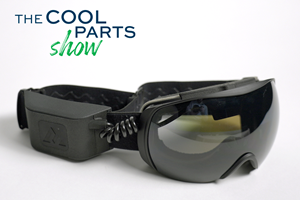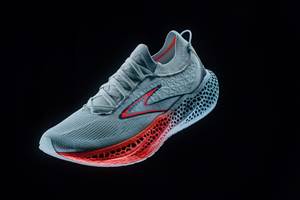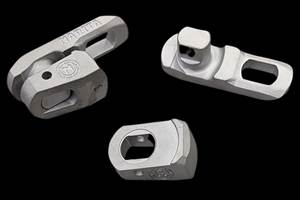What the Toy Industry Can Teach Us About 3D Printing
Consumer 3D printing faces many of the same challenges as industrial additive manufacturing, and solving them means raising awareness.
According to a recent white paper published by UL, by 2025, the annual economic impact of 3D printing is expected to reach $230 to $550 billion. Of that sum, $100 to $300 billion will consist of consumer products. One of those products—the focus of the UL paper—is toys. The growing availability of 3D-printed products as well as the printers themselves is opening the door for customized toys and the ability to easily replace broken or missing parts. But it’s also enabling a digital supply chain in which manufacturers can sell toy designs for consumers to print at home, rather than creating, packaging, stocking and shipping inventory themselves.
On its face, consumer 3D printing of toys delivers on the promise of AM and direct-digital manufacturing: the ability to design, customize and make precisely what is wanted or needed, when and where it is desired or necessary. But, on closer inspection, looking at the 3D-printed toy industry specifically throws into relief some of the key challenges of additive manufacturing at large, challenges that will need to be addressed for both consumers and industry.
The Challenges
Traditional manufacturing draws on processes already widely used and well-known, and operates within regulations that are clearly defined. 3D printing, both consumer and industrial, is a departure from this. Trial and error is part of the process, "hacking" printers or building them from kits is commonplace, and regulations don’t necessarily exist to cover all meaningful aspects of buying or building a 3D printer, designing parts or products, and producing those items.
In the case of the toy industry, being able to design and 3D print a toy at home takes production out of traditional manufacturing operations and review processes. Toys produced conventionally are (it is hoped) made in facilities set up for safe operation and consistent quality.
Design requirements mandate that toys are made from suitable materials that meet chemical standards for heavy metal content, and are designed to mitigate potential mechanical dangers such as choking or aspiration, puncture and laceration, pinching or crushing of fingers, eye injury, and ear impaction. To enforce such regulations, commercially produced toys are reviewed by safety professionals, subject to quality control processes and tested according to international toy safety standards.
"Who is considered the manufacturer of the printed toy? Is it the printer manufacturer, the designer of the model file or the printer operator who printed the toy?"
When toys are 3D-printed at home, this due process does not happen. Consumers can download 3D files of existing toys or design their own and print them with no oversight. There is no guarantee that the toy design, material, 3D printer and printing environment are safe, unless the consumer seeks out this information for themselves. And should something go wrong, assigning ownership is not easy. As the UL white paper asks, "Who is considered the manufacturer of the printed toy? Is it the printer manufacturer, the designer of the model file or the printer operator who printed the toy?"
Though the focus here is on consumer usage, manufacturers involved in AM occupy a similar position. Just as the consumer user of a 3D printer is making items (here, toys) outside of normal manufacturing, the user of additive manufacturing is making industrial components outside of conventional manufacturing processes and outside of assumed sequences of steps within established manufacturing supply chains.
Widespread understanding of AM safety and adequate policies for ensuring safety are still lacking. Controlling quality and validating additively manufactured components remains a challenge. And regulations for 3D printing operations, materials and products are still few and far between; just last year the FDA issued a draft guidance for additively manufactured medical devices, despite having already approved more than 85 applications for such devices.
What Is to Be Done?
For industrial manufacturers, regulations and the processes needed to meet them are forthcoming, but in the meantime education and self-regulation will be the best way to ensure the safety of facilities, processes and products. The white paper promotes a similar approach for consumer 3D printing, recommending that manufacturers of 3D printers take steps to educate consumers. This includes providing thorough instructions for printer operation, monitoring suppliers of raw materials and raising awareness of potential safety issues by providing guidance to customers on the safe use of the technology. While this approach cannot address every potential safety gap, it can help to improve the overall safety of consumer 3D printing.
For both consumer and industrial applications for 3D printing, education is—and will continue to be—the best way to ensure safe use of the technology.
Related Content
3D Printed Putter Tailored to the Golfer: The Cool Parts Show #49
An engineering student in South Africa used metal and polymer 3D printing in tandem to create a putter customized to the individual golfer’s swing.
Read MoreRekkie AR Ski Goggles Made Possible With 3D Printing: The Cool Parts Show #53
When the electronics enclosure key to these AR goggles proved difficult to mold, 3D printing allowed the inventors to keep the complexity — while also making improvements for assembly and user experience.
Read MoreHP Works With Brooks Running to 3D Print Performance Footwear
HP has collaborated with Brooks Running to create the Brooks Exhilarate-BL which features 3DNA, a 3D-printed midsole technology that delivers a propulsive, bouncy ride.
Read More3DEO Wins Design Excellence Awards
3DEO was recognized for outstanding applications of powder metallurgy.
Read MoreRead Next
4 Ways the Education and Training Challenge Is Different for Additive Manufacturing
The advance of additive manufacturing means we need more professionals educated in AM technology.
Read MoreHybrid Additive Manufacturing Machine Tools Continue to Make Gains (Includes Video)
The hybrid machine tool is an idea that continues to advance. Two important developments of recent years expand the possibilities for this platform.
Read More3D Printing Brings Sustainability, Accessibility to Glass Manufacturing
Australian startup Maple Glass Printing has developed a process for extruding glass into artwork, lab implements and architectural elements. Along the way, the company has also found more efficient ways of recycling this material.
Read More
.jpg;width=70;height=70;mode=crop)




















